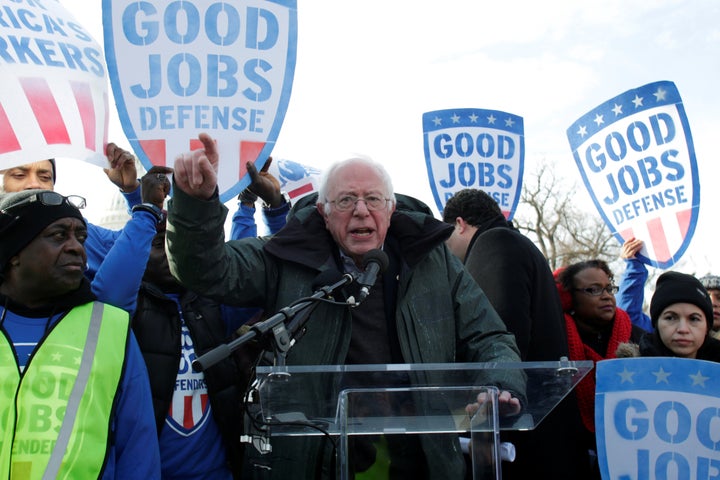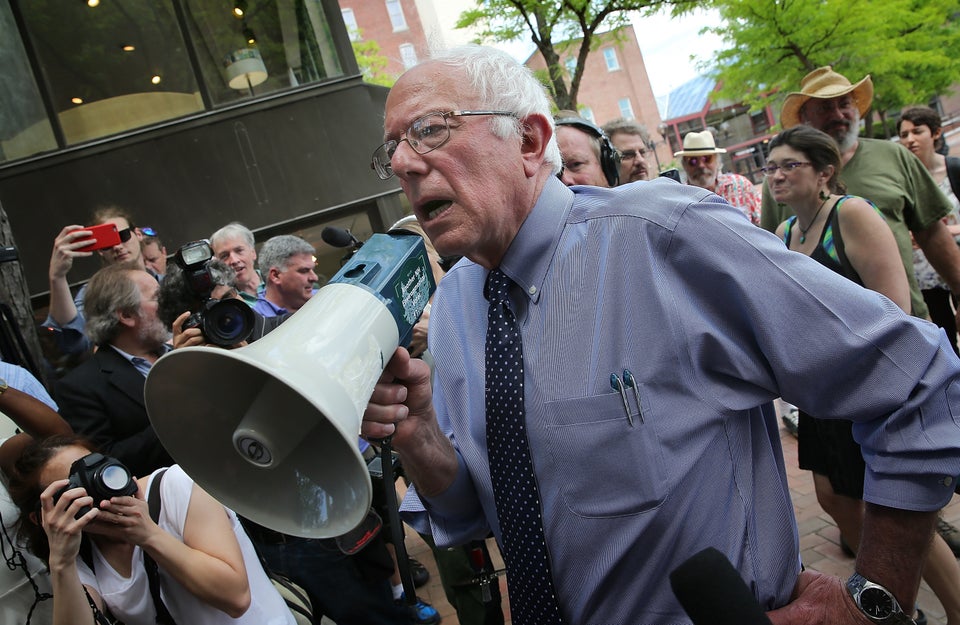At a time when Congress is debating a vast overhaul of the nation’s health care system, a hardened approach to refugees and immigration in general, and links between the current president and interests in Russia, Sen. Bernie Sanders (I-Vt.) finds himself increasingly outside the Beltway, in states and towns won by President Donald Trump.
Since January, the Vermont senator has stopped in Mississippi, Kansas and Michigan. Early next week, he’s heading to one of the poorest counties in America, McDowell County, West Virginia, which Trump carried by a ratio of 3-to-1. There, he will tape a show with MSNBC’s Chris Hayes.
Sanders views these enclaves as critical for the future of the Democratic Party and, by extension, the country. They are, he argues, the places where Democrats have shown “an enormous amount of neglect.”
“The truth is, and I think anyone who objectively assesses the situation has to appreciate, that the model the Democrats have followed for the last 10 to 20 years has been an ultimate failure,” Sanders said in an interview with The Huffington Post from his Senate office in Washington.
“That’s just the objective evidence. We are taking on a right-wing extremist party whose agenda is opposed time after time and on issue after issue by the vast majority of the American people. Yet we have lost the White House, the U.S. House, the U.S. Senate, almost two-thirds of the governors’ chairs and close to 900 legislative seats across this country. How can anyone not conclude that the Democratic agenda and approach has been a failure?”

Sanders, of course, is not a Democrat, despite caucusing with Democrats in the Senate for years and running in the party’s 2016 presidential primary. And often his diagnosis of Democrats’ failures strikes those who are in the party as tinged with condescension. But his appeal to a certain class of voters, including those who abandoned the party in favor of Trump, is undeniable, to the point that leadership moved quickly to mirror his playbook and curry his favor. This past summer, the party adopted its most progressive platform ever, with many policies echoing Sanders’ proposals. Following November’s election, Senate Minority Leader Chuck Schumer (D-N.Y.) gave Sanders a spot on his leadership team and endorsed his favored candidate ― Rep. Keith Ellison (D-Minn.) ― for Democratic National Committee chairman.
But platforms are largely ceremonial. And leadership roles matter little when your party is out of power. So Sanders has adopted what he sees as an “outside strategy” to complement his new status as an inside player.
“At the end of the day, being in the minority here in the Senate, the minority in the House, having a right-wing Republican president, the only way we are going to win this ― and I think we can win this ― is when millions of people stand up, especially in states that Trump carried, and say, ‘Excuse me. We did not elect you to be president to throw us off of health care. We did not elect you to cut back on the child care we desperately need,’” he said.
As he barnstorms America, much of what Sanders is advocating has a familiar ring. It’s the pitch he’s used for decades and the one that elevated his candidacy during last year’s primary. There is talk of raising the minimum wage, making public universities tuition-free, the need to protect and expand health care access and the encouragement of unionization efforts, including at the Nissan plant in Canton, Mississippi. There is a distinctly “What’s the matter with Kansas?” feel to it all, premised on the concept that many people who voted for Trump did so against their own self-interest.
And Sanders has a theory as to why. Part of it, he explains, is that Trump has effectively turned one set of voters (working-class whites) against another (immigrants and refugees) to the point the real culprits (bottom-line-driven CEOs) skate by without reprimand or punishment.
“That’s what demagogues have always done,” he says of Trump. “You pick on the weak and the powerless and you turn a majority against them and you deflect attention from the real causes of the problems that we face.”
But there is also a personal element motivating Sanders’ travel too. The crowds he’s drawing aren’t the stadium-sized ones of his primary campaign. But they are the same sets of voters: individuals who left the Democratic Party, may never have associated with it at all or were never politically active in the first place.
If Democrats are to regain power ― and if Sanders is to run for the White House again ― success will be predicated on getting this segment of the population engaged. That can be done from D.C., and it can take the form of resistance to Trump. But the bet the senator is making is that it’s more enduring if you go to where the people are with an impassioned, populist pitch.
“I think from a moral perspective as well as good politics that you cannot just be defensive,” he said. “You need a proactive agenda that brings people together to fight for a new America.”
Video by JM Rieger and Jessica Carro.


